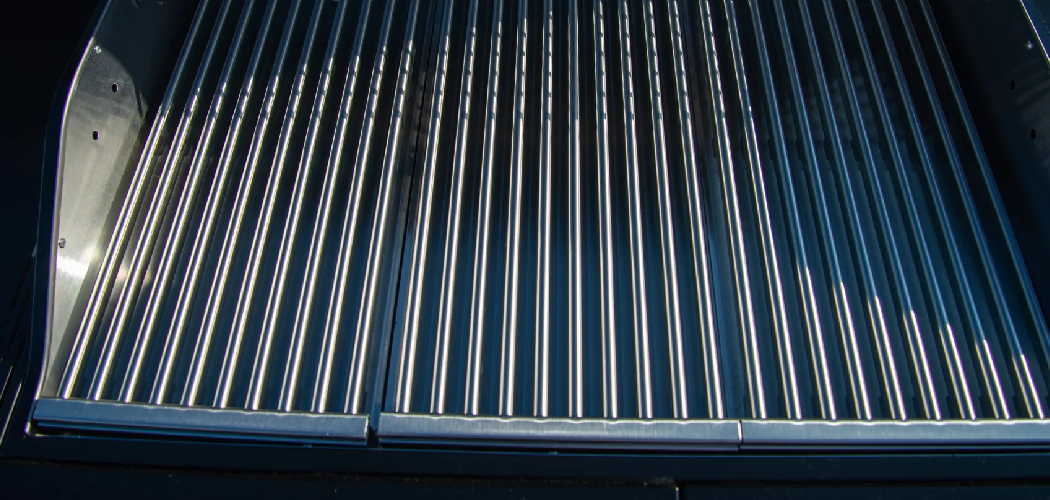A steel griddle is an excellent tool to have in the kitchen, perfect for cooking pancakes, eggs, bacon, toast, and many other delicious treats. While it can be a little tricky to clean, maintaining a clean and well-maintained griddle is essential to ensure your food stays healthy and tasty.
If you’re looking for a simple and efficient way to clean your steel griddle, this guide is for you. We’ll walk you through every step of the process, so you can have your griddle sparkling like new in no time! Keep reading to learn how to clean a steel griddle.
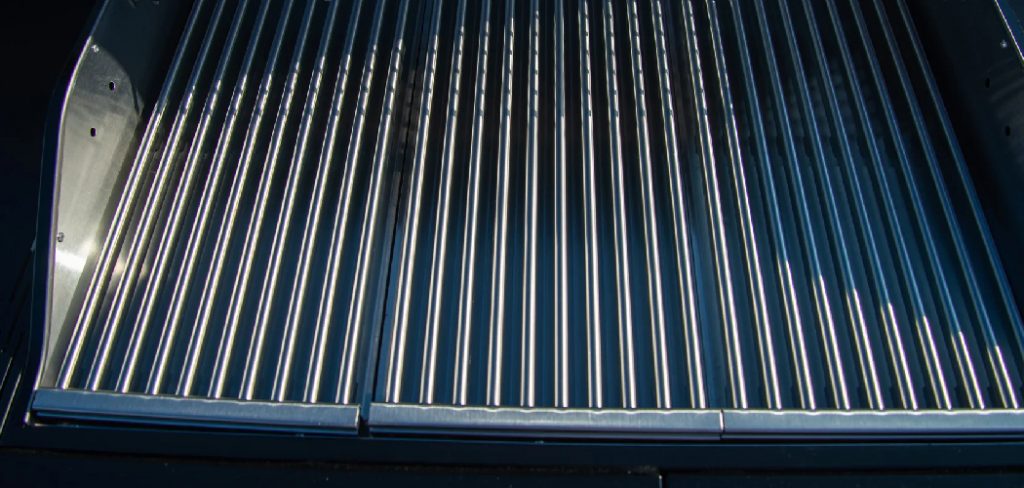
Can You Clean a Steel Griddle?
Steel griddles are a staple in kitchens – perfect for making pancakes, eggs, and bacon. But when it comes to cleaning these heavy-duty cooking tools, it can feel like a daunting task.
And while some may think steel griddles require special cleaning methods, the truth is that they can actually be easier to clean than most other surfaces. The key is to use the right tools and cleaning agents. With a little bit of elbow grease and a few simple steps, you’ll have a sparkling griddle ready for your next breakfast feast. So if you’re wondering if you can clean a steel griddle, the answer is a resounding yes!
Why Should You Clean a Steel Griddle?
There’s nothing quite like the delicious sizzle of bacon on a steel griddle, right? But as mouth-watering as that sound may be, it’s important to keep your griddle clean for both taste and safety reasons. Not only can leftover food particles and grease stick to your griddle and create a not-so-tasty residue, but they can also harbor harmful bacteria that can make you and your loved ones sick.
Regular cleaning also helps maintain the quality and longevity of your griddle, allowing you to enjoy those savory breakfast dishes for years to come. So, be sure to give your steel griddle a good scrub down after each use – trust us, your stomach will thank you!
The Ultimate Guide on How to Clean a Steel Griddle
1. Get Rid of Excess Grease
The first step to cleaning your griddle is to remove any excess grease or food debris that may have accumulated during cooking. With a scraper or spatula, scrape any remaining bits of food, grease, and oil into your grease tray or container. The goal is to leave your griddle clean and as smooth as possible.
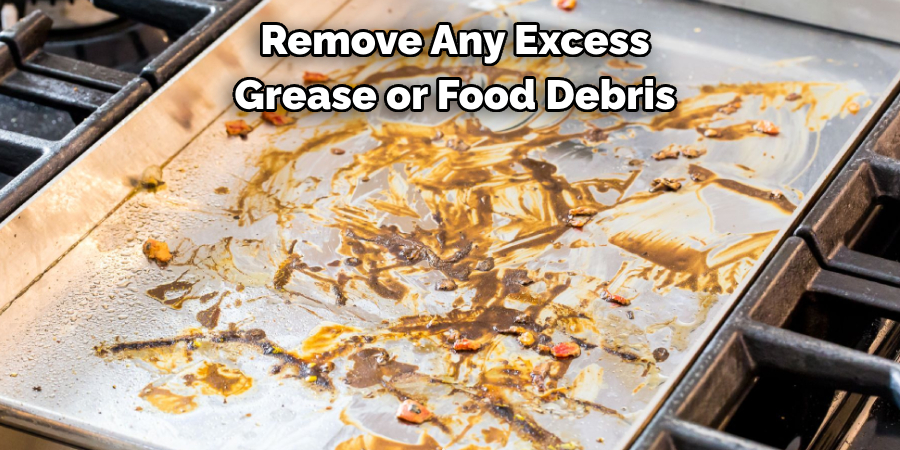
2. Use a Soapy Sponge or Cloth
Once you have removed all the debris from the surface, it’s time to clean it further. Use a sponge or cloth dipped in soapy water to gently scrub your griddle’s surface. You can also use a rag or towel to wipe down the surface. It is crucial to use gentle pressure and avoid harsh scrubbing, as it can damage your griddle’s surface. Rinse the griddle surface with clean water after cleaning.
3. Remove Stains with Vinegar
If your griddle has stubborn stains that won’t come off with soap and water, try using vinegar. Dampen a piece of cloth with vinegar, and apply it to the stained area. Let it sit for a few minutes, then scrub it gently with a soft-bristled brush. Once the stain is removed, rinse the griddle surface with clean water and dry thoroughly.
4. Season Your Griddle
To maintain your griddle surface and ensure a non-stick cooking surface, seasoning is a must after every cleaning. To season your griddle, apply a thin layer of vegetable oil over the surface. Heat the griddle on medium heat for about 5-10 minutes or until the oil starts to smoke. Let it cool down to room temperature. Wipe off any excess oil with a paper towel, and your grill is ready to use again.
5. Use a Griddle Stone for Tough Build-Up
If you have heavy build-up or burnt-on food on your griddle surface, using a griddle stone can help. A griddle stone is made of pumice, tough enough to remove tough build-up without scratching the surface. Wet the griddle stone with water and gently scrub the surface in a circular motion until the build-up is removed.
6. Don’t Forget to Clean the Drip Tray
While cleaning your griddle, don’t forget to clean the drip tray or container where you collect excess grease and debris. Empty it after each use, and wash it with hot, soapy water when needed. Make sure to dry it thoroughly before using it again.
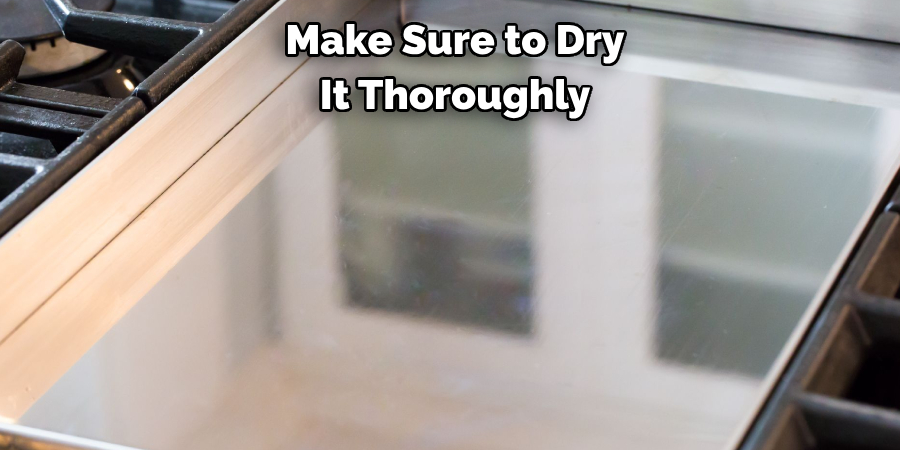
7. Store Your Griddle Properly
After cleaning and seasoning your griddle, store it properly to prevent any damage. If possible, store it indoors in a clean, dry place. You can also cover it with a cloth or towel to prevent dust and dirt from accumulating on the surface.
Cleaning your steel griddle regularly is important not only for maintaining its appearance but also for ensuring safe and hygienic cooking. Following these steps, you can keep your griddle clean and in top condition, making your cooking experience more enjoyable. Remember to always use gentle cleaning methods and avoid harsh chemicals to prevent damage to your griddle.
5 Considerations Things When You Need to Clean a Steel Griddle
1. Temperature
When cleaning a steel griddle, the first consideration is the temperature of the griddle. If the griddle is still hot from cooking, it should be allowed to cool down before beginning the cleaning process. This will help prevent burns and ensure that all of the dirt and residue can be removed more easily.
2. Cleaning Supplies
The next consideration when cleaning a steel griddle is what type of cleaning supplies to use. Many people prefer to use mild dish soap and warm water for this task, as this combination can effectively remove grease and dirt without damaging the surface of the griddle. It is also important to have a non-abrasive scrubbing pad on hand to gently remove any stubborn residue or stains.
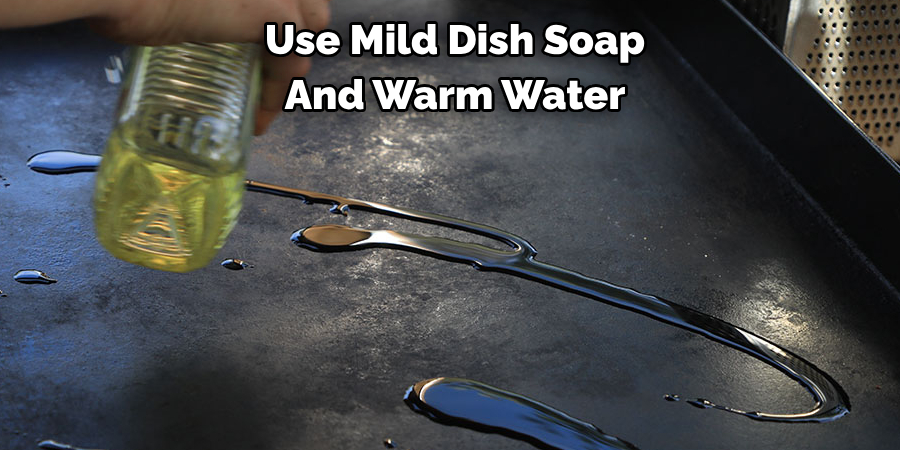
3. Pre-treating Stains
If there are any particularly stubborn stains on the griddle, it may be necessary to pre-treat them with an appropriate cleaner before attempting to scrub them away. For example, if there are burnt-on food particles stuck to the surface of the griddle, it may be necessary to apply some baking soda or vinegar first to loosen them up before trying to scrub them away with a non-abrasive pad.
4. Rinse Thoroughly
Once all of the dirt and residue have been removed from the steel griddle, it is important to rinse it thoroughly to remove any traces of soap or cleaner that may remain on its surface. This will help ensure that no residual chemicals remain behind, which could potentially affect future cooking sessions with the griddle.
5. Dry Immediately
Finally, once all of the dirt and residue has been removed from the steel griddle, and it has been rinsed thoroughly, it is important to dry it immediately in order to prevent rusting or other damage that can occur when moisture remains on its surface, too long
Benefits of Cleaning a Steel Griddle
A steel griddle is an essential kitchen appliance that provides a lot of convenience during cooking. Cleaning it is equally important as it helps maintain efficiency and prolong lifespan. The benefits of cleaning a steel griddle go beyond just maintaining its appearance. A well-maintained steel griddle improves your food’s taste by ensuring there are no flavors from previous meals.
Additionally, regular cleaning helps reduce the risk of food contamination and keeps your kitchen hygienic. A clean steel griddle is also easier to prepare, and it evenly cooks the food, leaving no hot spots or cold spots. Therefore, investing in proper cleaning equipment and techniques is essential to enjoy all the benefits of a cleaner steel griddle.
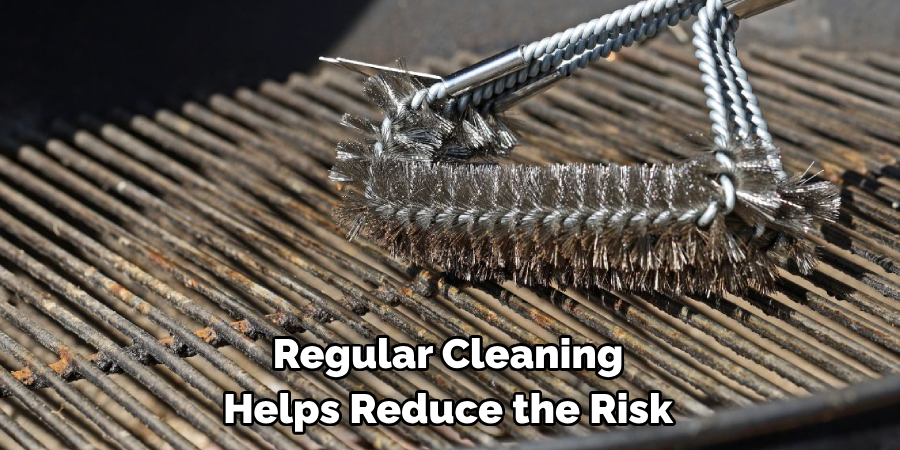
Some Common Mistakes People Make When Trying to Clean a Steel Griddle
Maintaining a steel griddle is vital for its longevity and for producing delicious meals for your loved ones. However, it’s common for people to make errors when trying to clean them.
One common mistake is using abrasive sponges that can leave scratches on the steel surface, compromising its integrity. Scratches can also cause food particles to collect, making it challenging to clean them later. Another mistake is using harsh chemicals that can damage the steel griddle and its non-stick coating. Using the wrong cleaning products can cause pitting, rusting, and discoloration on the surface. Additionally, not allowing the griddle to cool down before washing can lead to warping, bending, or even cracking. So, the next time you clean your steel griddle, be mindful of the cleaning products and techniques to avoid making these common mistakes.
Conclusion
With just a little bit of time and effort, you can keep your steel griddle in excellent condition for long-term use. Remember to get rid of excess grease, use a soapy sponge, remove stains with vinegar, and season your griddle after every cleaning. With these tips, you’ll have a well-maintained steel griddle that serves you for years to come. Thanks for reading our post about how to clean a steel griddle and happy cooking!

